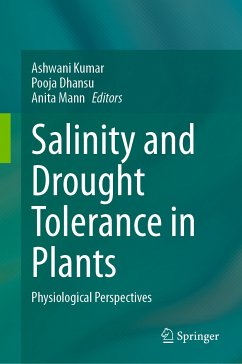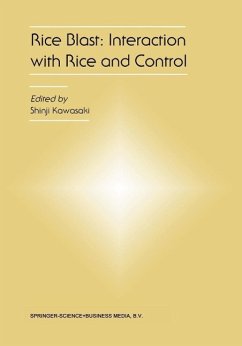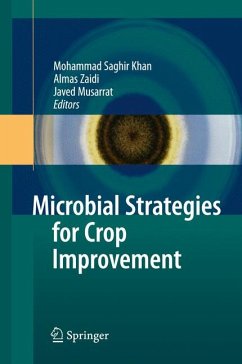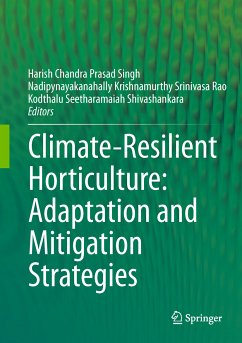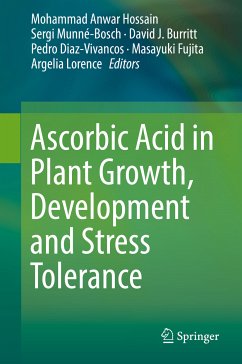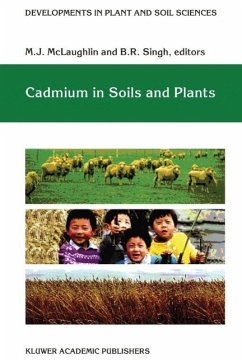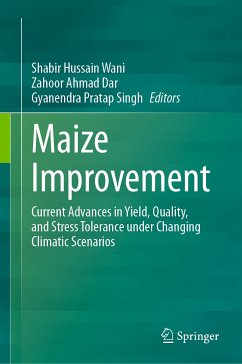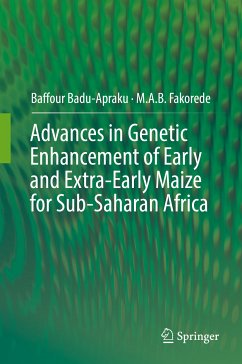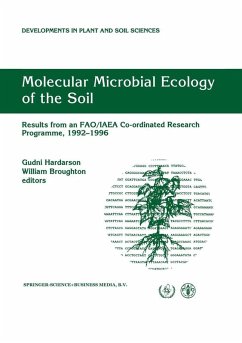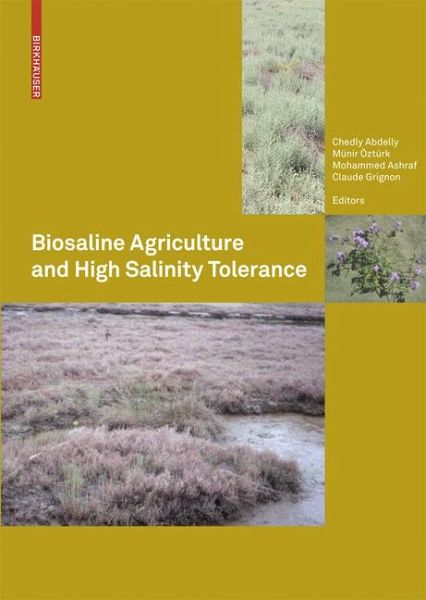
Biosaline Agriculture and High Salinity Tolerance (eBook, PDF)
Versandkostenfrei!
Sofort per Download lieferbar
160,95 €
inkl. MwSt.
Weitere Ausgaben:

PAYBACK Punkte
80 °P sammeln!
A major threat to agricultural productivity worldwide is undoubtedly due to environments with stressful factors including drought, salinity, waterlogging, extreme temperatures, non-optimal levels of mineral nutrients etc. Based on contributions presented at the International Conference on Biosaline Agriculture and High Salinity Tolerance in November 2006 in Gammarth, Tunisia, this book reviews the current state of knowledge in biosaline agriculture and high salinity tolerance in plants. It mainly focuses on the biotic approach to economically utilize the stress-prone areas by growing resistant...
A major threat to agricultural productivity worldwide is undoubtedly due to environments with stressful factors including drought, salinity, waterlogging, extreme temperatures, non-optimal levels of mineral nutrients etc. Based on contributions presented at the International Conference on Biosaline Agriculture and High Salinity Tolerance in November 2006 in Gammarth, Tunisia, this book reviews the current state of knowledge in biosaline agriculture and high salinity tolerance in plants. It mainly focuses on the biotic approach to economically utilize the stress-prone areas by growing resistant plants.
This volume comprises three sections: physiology and biochemistry, ecology, and molecular biology. Thus, a systematic approach has been adopted to uncover plant responses to various ecological factors at physiological and molecular levels.
It is of interest to students, researchers and professionals in plant physiology, molecular biology, biotechnology, agriculture, soil science, and environmental biology.
This volume comprises three sections: physiology and biochemistry, ecology, and molecular biology. Thus, a systematic approach has been adopted to uncover plant responses to various ecological factors at physiological and molecular levels.
It is of interest to students, researchers and professionals in plant physiology, molecular biology, biotechnology, agriculture, soil science, and environmental biology.
Dieser Download kann aus rechtlichen Gründen nur mit Rechnungsadresse in A, B, BG, CY, CZ, D, DK, EW, E, FIN, F, GR, HR, H, IRL, I, LT, L, LR, M, NL, PL, P, R, S, SLO, SK ausgeliefert werden.




